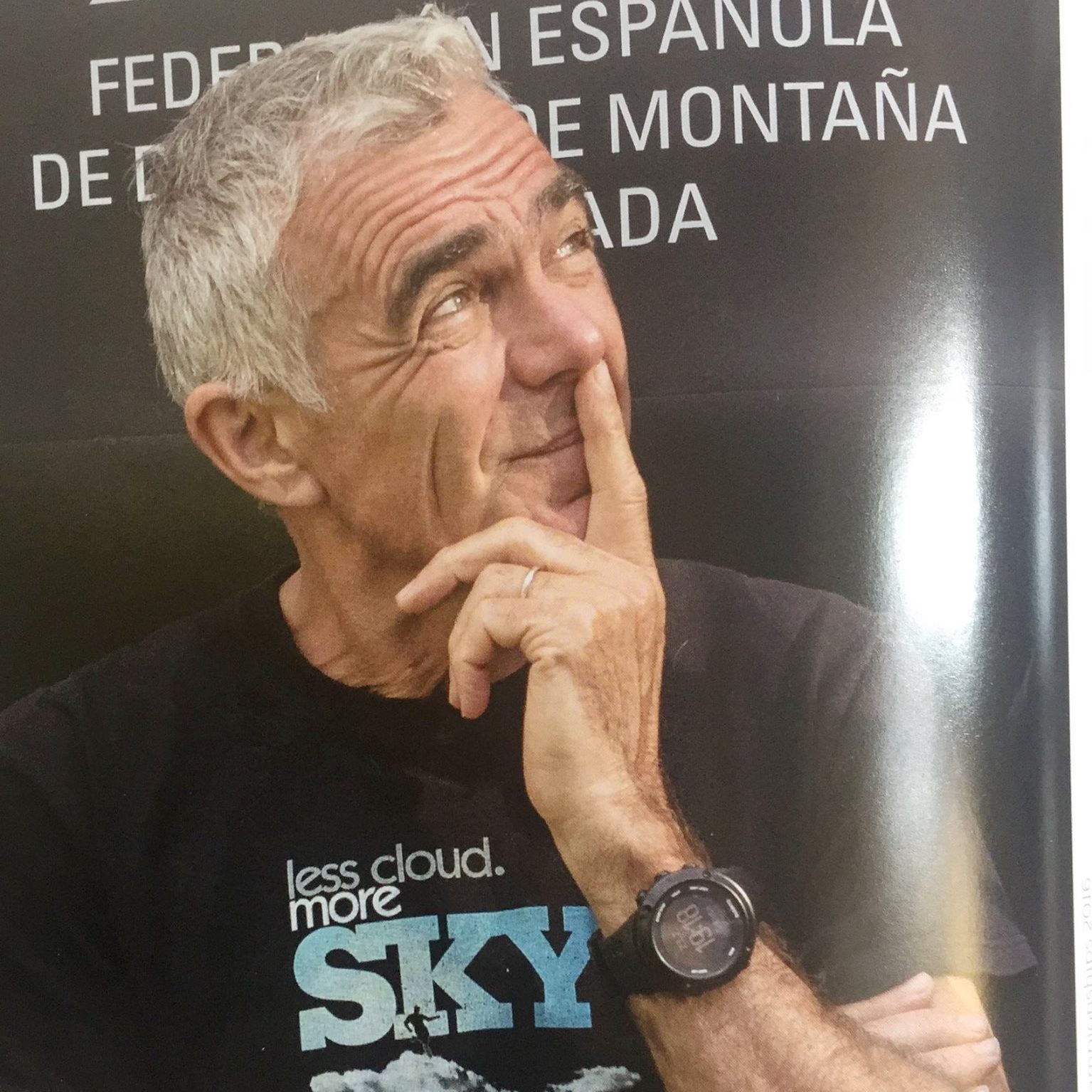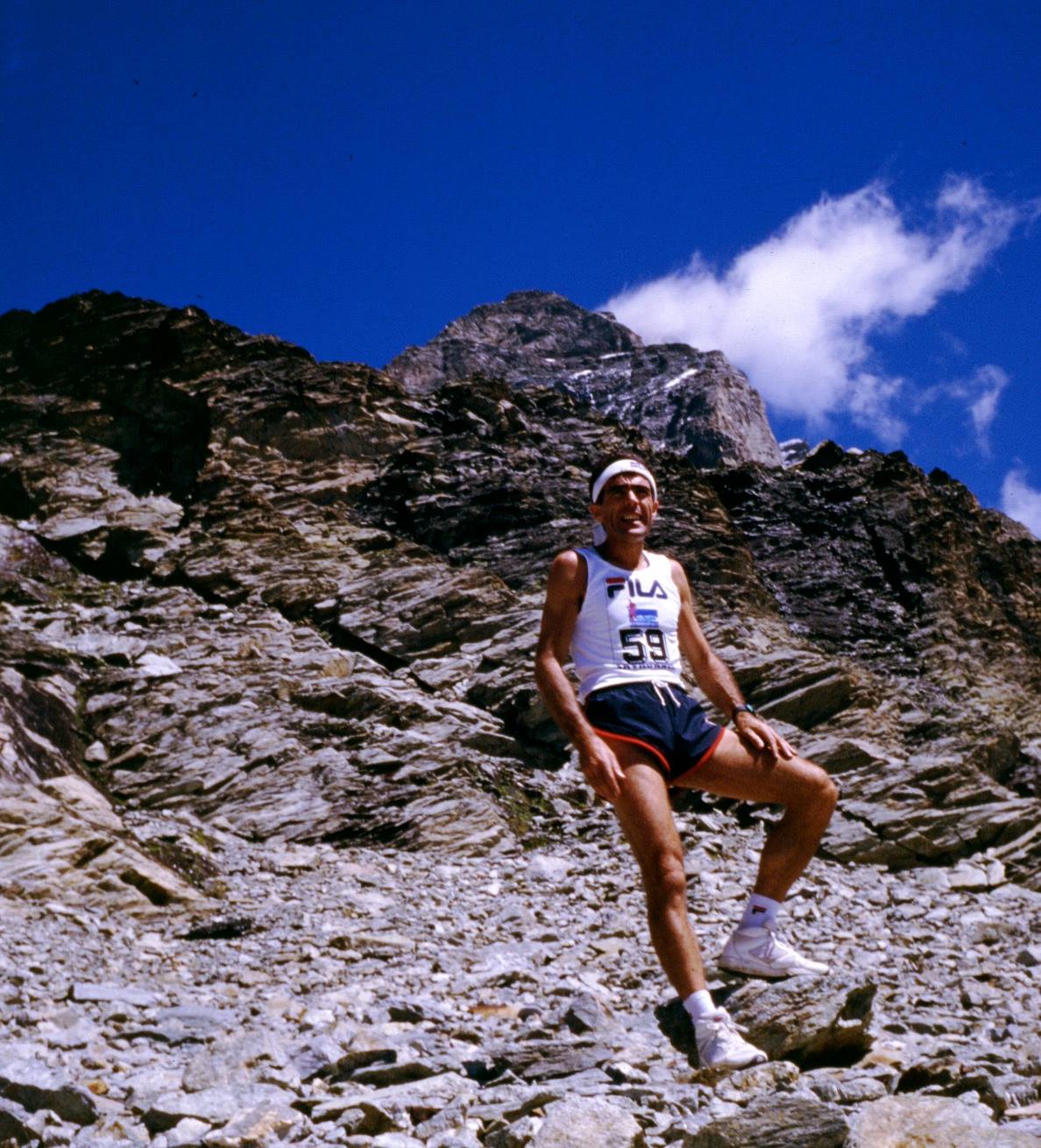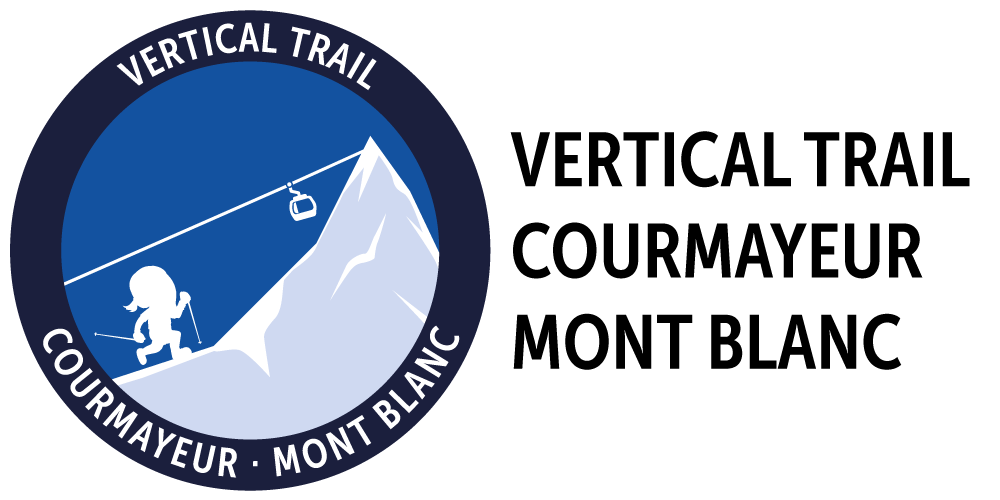Marino Giacometti is universally recognized as the “father” of Skyrunning, the one who coined this term and made it popular thanks to the many sporting challenges and his commitment to the federations once he abandoned his sports career. He was interviewed by Carmela Vergura of the Mountain Trail Board, the organiser of the Vertical Trail Courmayeur Mont Blanc.

Marino, how did the term “Skyrunning” was born?
After the first race from Courmayeur to the Mont Blanc in some articles they called us “runners of the sky” and from there the name Skyrunner was born. When the sport was defined, the logical name was precisely skyrunning.
Let’s talk about numbers and dates: in 1995 the Federation for Sport at Altitude (FSA) was born, then it changed its name to become ISF (International Skyrunning Federation, of which you are the President), currently (2021) there are 200 ISF races in 65 countries and a participation with over 50,000 participants.
A great success in 26 years: Did you expect these numbers?
Frankly, I expected more as a federation, not in terms of numbers. We have 41 members in as many countries but many are simple associations and, apart from 15, are not yet recognized by their respective Olympic Committees. Actually, at the beginning I imagined a sort of mountain IOC that would bring together all the high altitude disciplines. Then we became “mono federal”. Who knows if one day we will resume the dream started with SkyGames in 2000.
You are the actual President of the ISF (International Skyrunning Federation), how did you plan the 2021 calendar considering all the issues related to the Pandemic?
After the federation was founded in 1995, since 2008 I have been forcibly the ISF president whose main mission is the promotion and recognition of the discipline at the Olympic level. Precisely for this reason we have loaded ourselves with ad hoc bureaucracies and regulations. For 2021 we are sailing on sight, but the two world championships, absolute and young, are confirmed in July and August. By applying the C19 protocols we will try to facilitate the participation of all nations. At the moment we are at 25 confirmations.
FISKY (recognized by CONI) was born in Italy a few years ago and governs the activity of Skyrunning, how do you see its development in future years?
The road is always uphill but the first recognition of CONI (as a discipline) within mountaineering is a good step to identify this specificity with respect to classic mountain running or hybrid trail running races
In terms of safety, what is the difference between the Mountain Race (recognized by FIDAL) and a Skyrace?
The basic concept is that in classic mountain running you run on smooth trails in runner’s outfit. Skyrunning has a “mountaineering” component and includes the use of hands, poles, tools, crampons, use of fixed ropes, snow, ridges with relative exposure… therefore the need for preparation and routes equipped by alpine guides.
Could Skyrunning one day become an Olympic discipline?
As a recognition of the discipline we are working on it. Not as a discipline in the Olympics, like trail running ior classic mountain running. In the very distant future there could be indoor vertical (skyscrapers) or VK races on standard courses. The rest is impossible, even by distorting the sport with sprints or artificial courses. Skyrunning is in the mountains.
Of all your records and alpine challenges, which one do you most remember?
I confess that I remember many moments but often to frame that climb or that record I have to go and reread my curriculum vitae or search among the historical documents. Of mountaineering, among the various 8000m expeditions I remember every meter of the Diamir face at Nanga Parbat, perhaps because it was the first, but perhaps also the most difficult compared to Broad Peak or Gasherbrum. For skyrunning races it is certainly always Mont Blanc, even in the Genoa / sea version. On the Monte Rosa I suffered more because I was totally alone, but perhaps for this reason the memories are more blurred. I will try to bring them back to the surface in my next book.

On July 28, 1991, four athletes – Adriano Greco, Marino Giacometti, Angelo Todisco and Sergio Rozzi – took part in the first edition of the ascent to Mont Blanc from Courmayeur with 52 kilometers of development, won by Adriano Greco in 8h48’25 ”.
What do you remember of that day?
I was more stressed as an organizer than as an athlete, having marked the route the day before and shooting that the guide had signaled the passages on the crevass bridges above. As an athlete I remember only the last sprint before Courmayeur to stay under 10 hours. Two years earlier I had spent 12 hours with my friend Paolo Fornoni, but we took the descent at ease …
What do you think about the evolution of the equipment and clothing of the skyrunner athlete from the early 90s compared to today, how has it improved or changed?
Some of our prototypes of that time would still be at the level of the best current clothing items. The leap in quality was made above all in the shoes (to know how to choose them), in the micro-pads, in the “camel bag” backpacks and in the same supplements … at the time there was only one brand available with pharmacy-style vials and there were no bars of any kind.
It is often said that Skyrunning is not for everyone.
Do you agree?
The panorama of the skyraces is wide and technically on three levels of difficulty. With a good preparation for “half marathon or marathon” you can easily begin to try your hand at the first level. However, it is also important to train yourself to run downhill. In the first tests you will feel pain in the quadriceps, but by training often the muscles repair themselves and paradoxically, the more you run downhill the less pain you have the next day …
To face Skyrunning competitions, is it enough to train in the place where you live or is it important to train at altitude and on tracks that simulate those of a race?
It depends a lot on the profile of the race and on the average altitude. For example, if the race starts at 1000m and reaches 2500m only as a maximum altitude, just train everywhere, but always also on uphill and downhill reps. The preparation scheme is similar to the marathon with the difference that times and distances are measured uphill and downhill rather than on the flat. If the race instead started from 2000m and / or had a higher average altitude, specific training on that terrain and a short 2-3 day pre-race acclimatization is essential.
Marino, I ask you a question as an athlete who is not an expert on Vertical. If I decide to register for the VK2 Mont Blanc scheduled for July 31st in Courmayeur, 11 km long, 2000mt d + and arriving at 3560mt of altitude, what would you recommend for my preparation?
It would be essential to have first tried a classic VK race or a technical skyrace. As an aerobic effort, the VK2 is much more demanding than any skyrace because you keep up climbing for a long time, it is at high altitude and you have to be lucid in the more technical sections. So train a lot and on steep terrain before accepting this challenge.
How do you see the development of the Mont Blanc VK2 race?
A wonderful race that has revived the first stretch of SkySki du Mont Blanc in a modern way that ended at the Aiguille du Midi in which I have collaborated for 4 editions since 1998. Congratulations and thanks to Gigi for putting this event back on its feet. I believe that VK2 represents the essence of skyrunning and will only grow, like the rebirth of the Monte Rosa SkyMarathon which reaches 4454m at Capanna Margherita. These are races not for everyone but they will inspire many athletes.
Here is a list of the names of athletes who have signed the golden roll of the discipline in the sky. Could you briefly describe each of them?
- Bruno Brunod: strong, clear, tireless, as in his work, a friend
- Jean Pellisier: very athletically strong, large engine, delicate wheels
- Adriano Greco: a war machine that has raised many talents
- Fabio Meraldi: the most eclectic of the skyrunners and with a photo style
- Davide Magnini: I know him little but athletically he reminds me of Pellissier
- Gloriana Pellisier: Valdostana doc, eclectic like Meraldi
- Manuela Brizio: very strong, tireless and insatiable in races and victories
- Silvia Serafini: strong and beautiful on the road and in the mountains, but squeezed to the point of nausea
- Gisella Bendotti: the female history of original skyrunning and still runs!
One last question before leaving us, Kilian Jornet’s speed record on the Matterhorn 2h 52’02 “(21 August 2013) in your opinion will ever be beaten?
It seems impossible, but that was also said of Bruno’s 3h14.44 … but there was room for equipment and verglass. Kilian, on the other hand, had all the best possible.
If anyone succeeds it will be a matter of minutes or seconds, so it would be a miniature record.
